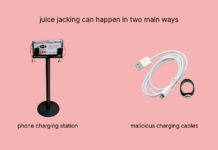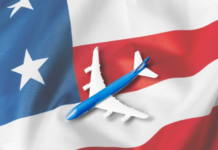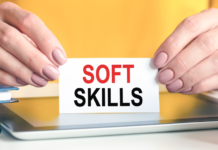Library lessons can provide an exciting and engaging way to teach students about a vast array of topics. Creative library lesson plans can help to inspire your students and provide them with an enriching and rewarding learning experience. These lessons may take the form of discussions or hands-on activities, allowing students to interact directly with books and discover new information. Creative library lessons help to foster a passion for reading and learning, as students are encouraged to explore a variety of topics in a unique and interesting way. Library lessons also help to reinforce concepts that have been taught in the classroom, such as literacy, numeracy, and other core skills. Through these lessons, students can cultivate a love of books and reading that will stay with them for a lifetime.
What Are Library Lesson Plans?
Library lesson plans provide teachers with an opportunity to connect with their students in a meaningful and unique way. They allow students to explore their interests, develop their skills, and learn more about themselves and their world. Library lesson plans give students the opportunity to use their creativity and their imaginations and to explore avenues for deeper learning. Through hands-on activities, library lesson plans allow teachers to design meaningful lessons that involve reading, research, and critical thinking. Library lesson plans are also an excellent way to foster collaboration among students. Through activities that involve groups of students hearing stories, exploring text, and working together on projects, classmates can discover commonalities and gain a better understanding of each other.
Library lesson plans also allow students to build their knowledge of a particular topic, share their opinions, and work together to come to a shared understanding. Library lesson plans give teachers the ability to create an array of learning experiences for their students. By utilizing the resources of the library, teachers can create dynamic and engaging activities for their students. With the tools available in the library, students will be exposed to all areas of learning, such as science, language arts, social studies, and more.
Exploring Storytelling with Books for Creative Learning
Storytelling through books is a fun way to encourage creative learning in children. It gives them an opportunity to explore ideas and create their own stories. Reading and listening to stories helps build language skills while introducing them to elements of literature, narrative structure, and the world around them. It helps them expand their imagination and ignite their creativity. Books give us a glimpse into characters from the past and can help children relate to people who may be different from them, or to people who have experienced or seen something different than what they have. Stories in books can provide a safe space to explore difficult topics, how different cultures interact, and how the world works.
They can also help children better understand themselves, their families, and the places around them. Books can help bring a subject to life, giving children a deeper understanding of the topic. Through literature, they can gain empathy and broaden their perspectives while expanding their knowledge. Books can help children learn new words, develop critical thinking skills, and practice their problem-solving skills. By providing children with books, we can encourage them to explore their creativity and develop a love of reading. Storytelling with books can be a powerful tool for creative learning.
Developing Group Projects Based on Library Resources
Developing group projects based on library resources is a useful tool to engage students in active learning and encourage students to become more independent and active users of the library. Library resources offer a plethora of materials, including books, magazine articles, databases, websites, and more, which can be used to generate engaging ideas for group projects. A librarian can provide guidance to students on researching and selecting which materials are the most relevant and helpful to their project. When creating a group project, students must first decide on a topic and then use the library resources to research that topic.
Researching can include finding relevant books, articles, and databases to source information. Additionally, students should brainstorm ideas and come up with a plan of action to accomplish the project, such as making a timeline for when each task needs to be completed. Developing group projects can encourage collaborative learning and teach students how to use library resources effectively. It can also help build research and critical thinking skills by engaging students to search for information. When completed, group projects can demonstrate knowledge and understanding of a topic and provide an opportunity for libraries to show off their collections and abilities.
Engaging Students with Music and Arts-Based Library Projects
Engaging students with music and arts-based library projects is a great way to encourage creativity and foster a sense of community. Music and art projects provide an engaging and meaningful way to explore various topics that are often difficult to grasp. As a unique form of learning, these projects allow students to practice critical thinking skills and draw meaningful connections. Arts-based projects can also stimulate children’s imaginations and create tasks that are both educational and enjoyable. Examples of library projects include creating musical instruments from recycled materials, designing a mural based on library resources, or putting on a play.
All of these activities use creativity and collaborative effort to bring together the library community while having fun. Such library projects can also promote intergenerational reading and storytelling, critical thinking, and the development of problem-solving skills. Music and arts-based library projects present a unique learning opportunity for students and can lead to increased learning outcomes and overall engagement.
Results From Library Lesson Plans
Results from library lesson plans are often very rewarding. Students who are involved in library lessons understand the importance of learning, explore new ideas, and become eager readers. While teaching, librarians can measure the success of library lesson plans based on student observations, remarks, and questions. Most importantly, the success of the library lessons can be determined through tangible results such as increased library circulation and increased usage of library tools like computers and other technological mediums. Furthermore, librarians can track the results of their library lessons by means of student assessments. These assessments can be done via quizzes, tests, or presentations created by the students due to the instruction.
Additionally, librarians can evaluate students’ progress based on the number of library visits, books checked out, websites used for research, and any other related tasks. The approach of using targeted instruction allows the librarian to assess individual and overall understanding of skills and topics. By evaluating how well library lessons have been taught, librarians can then proceed to implement and modify activities and lessons with the data collected. The data obtained from library lessons help librarians understand the interests of their students, which can be a source of motivation in the classroom.
Conclusion
The creative library lesson plans that were explored in this paper have provided a variety of approaches to inspiring students and encouraging them to actively engage with curriculum, books, reading, and literacy. Through the use of innovative activities, such as storytelling, technology integration, and reading challenges, librarians and teachers can take a creative approach to help students interact with and gain a greater appreciation for the resources available in their libraries. All of these approaches have their merits, and choosing the right one can be dependent on the needs of each student and the amount of resources available.
The use of creative library lesson plans is an effective way to inspire students and engage them in literacy activities. They help to create a more interactive atmosphere that encourages students to participate and ask questions. Furthermore, it helps to foster a sense of excitement among students with regard to literacy, which will make the teaching and learning process more enjoyable and effective. In short, creative library lesson plans are a great way for librarians and teachers to work together to make literacy more enjoyable and accessible for students.





















